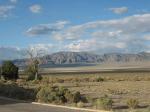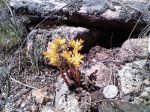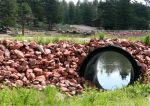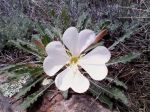Info added 9/1/09 Because of the Houndstonque at Gate 10 discussion…more info will be forthcoming.
Who: Linda Bell, Chana Fuller and Ellen Heath spent 7 person-hours working at the Batterson Greenbelt, where Charlie Bell and Butters Fuller accompanied us.
Weather: Sunny, low 70s
Description: At the Batterson Greenbelt, we mapped (with a Garmin nuvi 650) and weeded nine sites, see Google Earth map below. Linda helped us identify penny cress (PC), tumble mustard (TM), flixweed (FW), kochia (KO), and hound’s tongue (HT) which were there along with the usual suspects: Canada thistle (CT), Musk thistle (MT) and Dalmatian toadflax (DT). This area was very diverse and a nice contrast to Crellin Lake in terms of overall species diversity.
Map Notes:
Site 1–In a 50 ft diameter area, we clipped and bagged PC that had gone to seed, pulled or hand weed whacked KO, FW, and TM
Sites 2,3,4,6 — These were four test areas Linda Bell had flagged (last year?) to study the effects of stripping the leaves off of DT to weaken them. The numbers on the map indicate the number of plants in each 20 foot diameter area. Linda and Chana stripped the leaves in a downward motion.
Site 5 — This 50 ft diameter site had 100s of TM that we weed whacked before giving up.
Site 7 — We identified a 100 ft diameter area of disturbed soil as a weed hotspot that should be sprayed. The site had it all: CT, MT, HT, PC, F AND it is above Judd and Linda’s property. See photo.
Sites 8, 9 — These two sites are riparian areas with CT, MT.
Linda Bell’s Notes:
On June 24, 2008 Linda Bell emailed “Thanks Ellen for your very comprehensive notes and pictures. Just wanted to follow up with my own list of invasive plants from the reference names used in Weeds of the West. Cheers. Linda
Discussed, identified, not managed:
Stinging nettles
Canada thistle
Field bindweed
Smooth scouringrush (equisetum)
Cow parnisp
Identified and managed in very limited way
Dalmatian toadflax
Common mullein
Musk thistle
Flixweed
Houndstongue
Western sticktight
Smallseed falseflax
Tumble mustard (Jim Hill)
Field pennycress
Prickly lettuce (white sap)”




























